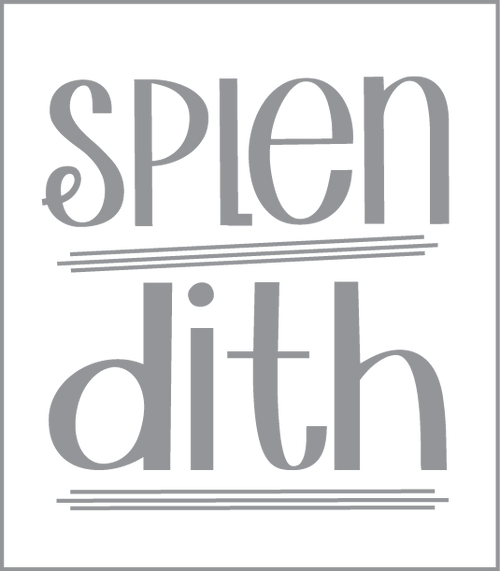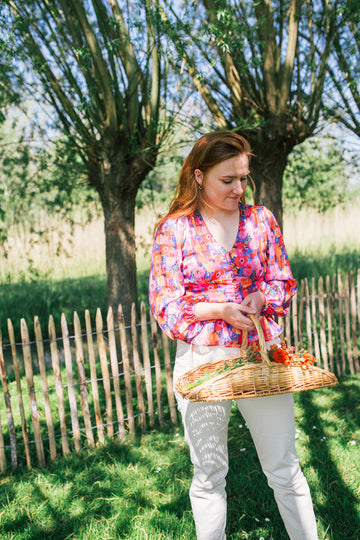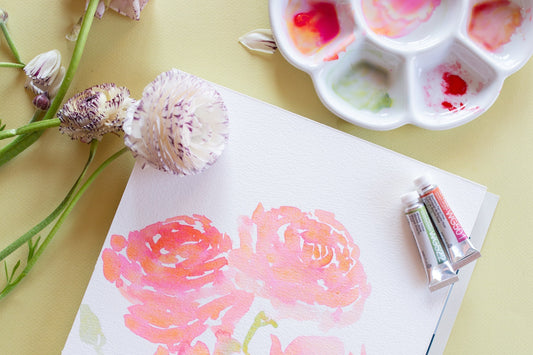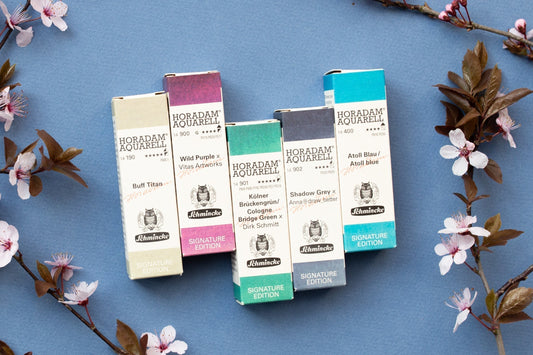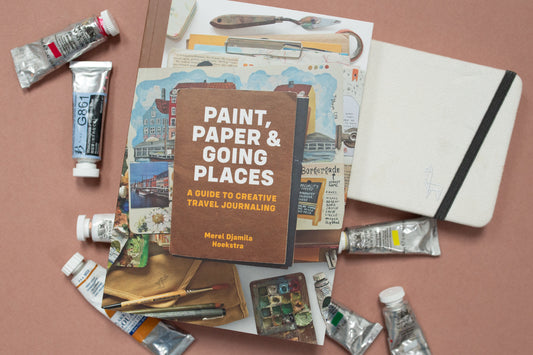Wil je zelf stempels gaan maken? Tja, waar begin je dan? In de shop staat een berg materialen, maar wat gebruik je waarvoor? Elk materiaal heeft een eigenschap waardoor ze fijn zijn om te gebruiken. Zoals altijd: het blijft persoonlijk wat voor jou nu het fijnste werkt. Maar wat is het nu eigenlijk?
Hoe maak je zelf stempels?
Wat een vrij traditionele manier van prints maken leek, komt helemaal weer terug. Met een guts snij je de stukken weg die je niet op de print wil hebben. Wat je overhoudt, dat wordt dus de uiteindelijke print. Het is vrij lastig om een goede rechte snede te maken in een carving blok, dus daarom heb je ook zeker wat oefening nodig voordat je de mooiste prints maakt ;). Hoe je dat precies doet, leg ik in een andere blog uit: lees die hier. Hopelijk helpt deze blog je verder bij het kiezen van de juiste materialen.
Als je gaat beginnen met het maken van stempels heb je vier verschillende materialen nodig.
Materialen:
- Guts
- Guts blok oftewel carving blok
- Stempelkussen, inkt of verf
- Papier

Dit zijn nog hele brede begrippen, maar tegelijkertijd ook de opbouw van deze blog. Per categorie leg ik je uit welke eigenschappen de materialen hebben. Maar als eerste: wat maak je eigenlijk met deze materialen?
Guts
Belangrijk bij een guts is dat deze fijn in de hand ligt. Bedenk daarbij hoe je de guts wil gaan gebruiken. Een guts gebruik je altijd in een snijdende beweging van je af. Daarom ligt het heft in je handpalm. Een rond heft is daarom comfortabel in gebruik.
Abig stempelguts
De Abig stempelguts set is de meest favoriete set om mee te gutsen. Het heft ligt fijn in de hand, door de ronde vorm hou je hem stevig in je handpalm vast en zet je makkelijk wat druk door de comfortabele vorm.
Rico stempelguts
De Rico gutsen set is vooral erg fijn omdat alle gutsen een eigen heft hebben. Je hoeft dus niet steeds elk mesje te wisselen in het heft. De grip is alsnog redelijk dik, waardoor je wel goede grip hebt op het heft tijdens het gutsen.
Mes
Een guts gebruik je uiteindelijk altijd om stukken weg te halen. Als extra hulpje kun je voor het gutsen ook eerst de randjes snijden met een vlijmscherp hobbymes. Zo maak je messcherpe kanten en prints. Dan kan je daarna de rest dus nog weg gutsen.

Guts blok
Het grootste verschil zit misschien wel in de carving blokken, ofwel gutsblokken. De ene persoon wil een heel stevig blok hebben om in te gutsen en iemand anders wil in een blok snijden alsof het een pakje boter is. Misschien gebruik je tot noch toe een gum. Gelukkig zijn er veel meer verschillende fijne opties, die het gutsen veel makkelijker voor je maken. Ik noem ze in volgorde van hard naar zacht.
Linoleum
Veruit de ‘taaiste’ optie is linoleum, dat is ook de meeste bekende optie onder velen. Misschien heb je dat ooit vroeger gebruikt voor een schoolopdracht. Dit materiaal wordt gebruikt door de liefhebbers door het stugge oppervlakte, waardoor je heel precies kunt werken. Het is bijna als het werken in hout, alleen gaat het dan ietsje makkelijker. De prints die zijn gemaakt met lino plakken, laten allemaal de structuur van het lino zien in de prints.
Voordelen
- Je kunt er heel precies mee werken
- Het is voordelig
Neutraal
- De structuur in de print. Uiteraard verschilt het per persoon wat je mooi vindt, daarom staat deze eigenschap als neutraal gemarkeerd
Nadelen
- De geur, linoleum ruikt vrij sterk
- Doordat linoleum erg stevig is, is er kans op uitschieten met je guts
Essdee Soft cut of easy cut
De Essdee SoftCut is wat zachter dan het Speedball Speedy-Carve en veert minder mee. Het materiaal is compact, brokkelt of breekt niet en is daarom heel geschikt voor precies werk. De ene kant is glad, de andere kant heeft een textuur. Door de witte kleur kun je er makkelijk op tekenen met potlood. De blokken zijn 3 mm dik.
Voordelen
- Pikt fijn inkt op
Nadelen
- Het materiaal is niet stevig genoeg om zo te gebruiken, dus ik raad je aan om het te verstevigen met een blokje hout of kunststof.
Factis Carving blokken
De Factis carving blokken zijn ideaal voor het maken van stempels en prints. Het buigzame vinyl is heel soepel, slechts 6 mm dik en je carvingmes glijdt er zo doorheen! Je kunt er hele precieze lijnen en details in maken. De Factis blokken zijn bijna hetzelfde als de Speedy Carve. Ik heb eigenlijk geen verschillen gevonden, op de kleur na.
Voordelen
- Goede prijs/kwaliteit verhouding
- Je hoeft ze niet te verstevigen
- Dubbelzijdig te gebruiken
- Bijna alle soorten inkt zijn te gebruiken
- Bevat geen latex, fosfaat en zware metalen
Nadelen
- Niet bestendig tegen oplosmiddelen
Speedy Carve by Speedball
De Speedy Carve blokken zijn gemaakt van flexibel rubber en hebben wat weg van een gum. Je glijdt er makkelijk doorheen met je carvingmes. Het materiaal is flexibel en breekt, brokkelt of scheurt niet. Deze blokken zijn ideaal om stempels te maken van foto’s, transfer images van inktjet printers etc. De blokken zijn 6 mm dik.
Voordelen
- Je hoeft ze niet te verstevigen
- Bevat geen latex
Nadelen
- De blokken zijn erg prijzig

![]() Stempelkussens of inkt
Stempelkussens of inkt
Versacolor of Versacraft
Deze twee stempelkussens noem ik in dezelfde categorie omdat er meestal wordt gevraagd wat het verschil tussen beide is. Zonder er een al te uitgebreide uitleg aan te wijden:
Waarom Versacolor:
- Beschikbaar in veel verschillende, heldere kleuren
- Fijn voor gebruik op papier
Waarom Versacraft:
- Watervast
- Te gebruiken op verschillende ondergronden zoals: hout, papier, textiel en leer
Acrylverf of inkt
Naast stempelkussens kan je natuurlijk ook andere materialen gebruiken voor het afdrukken van stempels en prints.
Inktrollers
Ga je grote prints maken? Dan zijn stempelkussens niet geschikt. Maar wat gebruik je dan? Zoals ik net al noemde kan je ook acryl gebruiken voor het printen met stempels. De acryl verf verspreid je met een inktroller over de stempel en vervolgens leg je het papier op de plaat neer. Dat druk je goed aan en daarna haal je het papier weer af van de printplaat. In de shop heb ik de maten 65 mm en 100 mm.
Papier
Voor mooie prints, heb je uiteindelijk goed papier nodig. Voor prints kan je het beste mooi glad papier gebruiken. Wat meestal erg mooi werkt is Bristol papier. Dit papier is super glad en meestal ook ongeveer 300grams waardoor je het meteen kunt gebruiken voor het ophangen tegen de muur :). Twee vliegen in 1 klap. Bristol papier is wat duurder papier, wil je liever eerst wat vaker oefenen? Dan is het Mixed media papier van Strathmore ook echt een aanrader! Dat is glad papier en goed geschikt voor verschillende soorten materialen.
Uiteraard zijn alle materialen die ik noemde in de blog te vinden in de shop. Alle items zijn gelinkt :).
Als er iets niet duidelijk is: please let me know! Ik help je graag!
Liefs,
Judith
